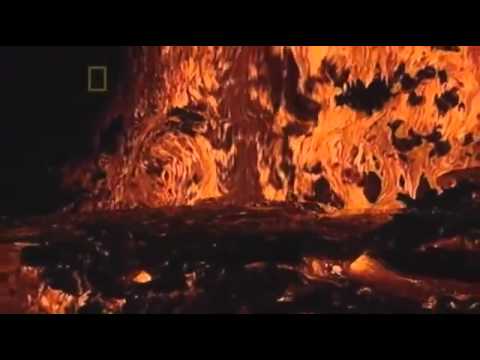What Is China Doing In Space?
How Powerful is China. . . ’s Space Program?. . . I watch a lot of Seeker Daily. Greetings friends from around the world, Julianhere for DNews. Now, I’m not at liberty to tell you exactlywhere the DNews bunker is but suffice it tosay that it’s in the United States. As such that tends to influence what we talkabout, like most of our space stories usuallyfocus on what the US Space Agency NASA isup to. But NASA is far from the only space programout there, so we thought we’d make a seriesof episodes exploring and appreciating theefforts of other countries, and first up isChina. China’s national space administration iscalled the…. China National Space Administration, or CNSAfor short. Founded in 1993, it’s a relatively new playeron the space scene, but it’s grown by greatleaps and bounds since its inception. China is only the third country to independentlysend astronauts into space, after Russia andthe United States. So far they’ve sent 10 up there, and evenput there own space station into orbit in2011, the Tiangong-1. I’m sure I’m not pronouncing that right;if you speak Mandarin, please bear with me. Tiangong-1 served as a space lab and a wayto test docking capabilities. Two manned crews visited the space station,but since 2013 it’s been all by its lonesome. In March of 2016 it stopped sending data backto earth, and in September, CNSA announcedit would come down some time in the secondhalf of 2017. This vague time frame has lead some to concludethat China has no control over the descentof Tiangong-1, and while most of it will probablyburn up upon reentry, some of the denser parts,like rocket engines, could make it through. What with the earth being mostly covered inwater, it’s probably going to land in anocean, but just in case, maybe keep one eyeon the sky starting June 2017. Still, CNSA insists that the space stationwas only designed to last 2 years, so makingit to 2017 is a huge success. The same month they sort-of announced Tiangong-1was just going to do it’s own thing, CNSAsuccessfully launched Tiangong-2. Their second space station has improved livingquarters and life support, and the first mannedmission to it is scheduled to last 30 days,while the longest one to Tiangong-1 was just12 days. China’s goal is to have it’s own largespace station by the early 2020s. You may be wondering why they don’t shackup with the rest of the world’s astronautsaboard the ISS. Unfortunately some borders in space are stilldefined by the ones down on Earth. In 2011 US legislators banned NASA from collaboratingwith the CNSA, citing fears of espionage. With NASA’s hands tied and the ISS lockingthe doors, China has had to go it alone, andhas responded magnificently. China’s not solely focused on putting menand women into orbit; they’ve also launchedscientific satellites to study space weatherand look for dark matter. More satellites are planned to look for blackholes and study solar wind. China has been collaborating with the EuropeanSpace Agency on some of these satellites since2003 in an effort to build international relations. They’vealso sent their own probes, a telescope, anda rover to the moon, and plan to send thefirst ever rover to the far side of the moon. First, though, they’ll have to set up acommunications satellite at a lagrange pointso the rover can still talk to Earth. They aren’t going to stop at the moon though,and have announced a plan to probe and roveMars by the 2020s. CNSA may be a comparatively young space program,but they are ambitious and their achievementsso far are impressive. China is considering using their space programto mine the moon for nuclear fuel. How you ask?I answer that here. We want to do a whole series on space programsfrom around the world. What’s the next one you think we shouldcover?Let us know in the comments and subscribefor more DNews.













